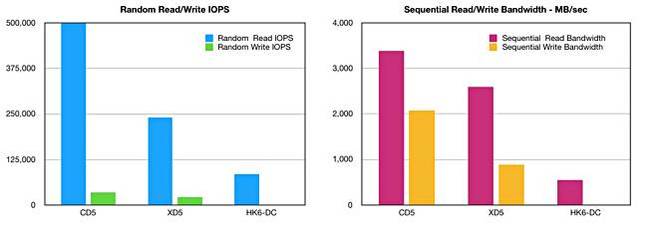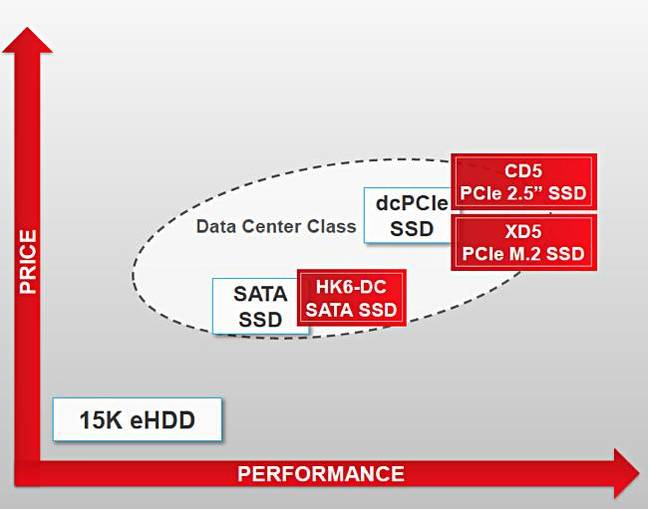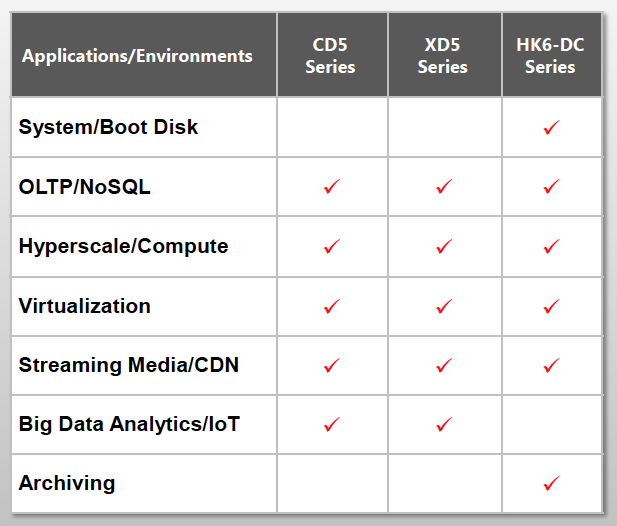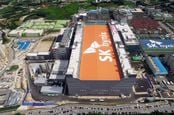This article is more than 1 year old
When I'm 64: Toshiba Memory Corp woos data centres with a little TLC... SSD trio
64-layer TLC 3D-NAND tech is ca(t)ching on
Toshiba is making a play for expanded data centre flash drive sales with a trio of 64-layer 3D NAND products.
The soberly named triad of drives – CD5, XD5 and HK6-DC (Toshiba doesn't do catchy when it comes to enterprise drives) – provide PCIe and SATA interfaces, and 2.5-inch and M.2 form factors.
Tosh's flash foundry partner Western Digital launched a pair of NVMe M.2 drives recently, the SN720 (256GB - 2TB) and SN520 (128GB-512GB), both positioned as mobile and edge device drives, as are many other chewing-gum-stick-sized M.2 SSDs. Toshiba's data centre positioning suggests storage array use, which is unusual, or use as direct-attached storage in servers.
The basic tabulated speeds 'n' feeds of Tosh's SSD trio are these:
| Interface | Form-Factor | Capacity Range | Precursor | |
|---|---|---|---|---|
| CD5 | PCIe NVMe 1.3 | 2.5-inch | 960GB - 7.7TB | CM5 |
| XD5 | PCIe NVMe 1.2.1 | M.2 | 1.9TB-3.8TB | XG5 |
| HK6 | SATA 6Gbit/s | 2.5-inch | 960GB - 3.8TB | HK4 |
The "Up to" performance numbers vary with capacity, increasing as it rises, and the maximum values are:
| Random Read IOPS | Random Write IOPS | Sequential Read MB/sec | Sequential Write MB/sec | |
|---|---|---|---|---|
| CD5 | 500,000 | 35,000 | 3,393 | 2,076 |
| XD5 | 240,000 | 21,000 | 2,600 | 890 |
| HK6 | 85,000 | Not supplied | 550 | Not supplied |
Charting these numbers supplies an instant performance comparison and shows how they are optimised for read-intensive work:
All-in-all they are nicely graduated performance-wise. Here is how Toshiba has positioned them in a price/performance sense:
The Toshiba execs said they wanted to replace rotating rust in the data centre. Like Toshiba's own disk drives, we asked? "No," they said; that's a different company. We are in the Toshiba Memory Corporation which is being sold to a Bain Capital-led consortium. The competitive juices are rising already.
Toshiba Memory sees its 64-layer BiCS-3 technology triplets being used in overlapping application areas:
The HK6 has low performance compared to the other two, which is why it is not tagged for big data analytics and gets a suitable-for-archiving tick.
We were told by Toshiba execs that the XD5 is targeted at data centre systems needing Facebook Lightning-type drives, Facebook having popularised the M.2 form-factor. They asked us to imagine a rackmount box full of them, like a single gigantic SSD with the right software to manage the access and the drive's capacity.
Some 264 of them would provide a petabyte of flash, but their power and cooling might well be problematic. Might we see water-cooled SSDs?
Toshiba has not committed to either of the two ruler SSD formats, meaning those from Samsung and Intel, preferring to stick with industry-standard 2.5-inch and M.2 sizes.
The HK6 with its SATA interface harks back to disk-drive interfaces and will be for OEMs and system builders still using that. NVMe is the future, as the performance numbers have showed, and we look forward to NVMe over Fabrics interfaces to boxes of CD5 drives, and XD5s too.
Toshiba is moving all its flash production to 64-layer TLC (3bits/cell) NAND. The next development will be 96-layer flash, with the flash chips intrinsically having more capacity from the extra 32 layers. And we also have the delights of QLC (4bits/cell) to look forward to. A potential HK6 using 96-layer QLC flash might have 6.3TB of maximum capacity... juicy. Fast access archives, here we come. ®




